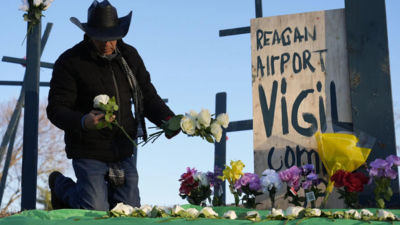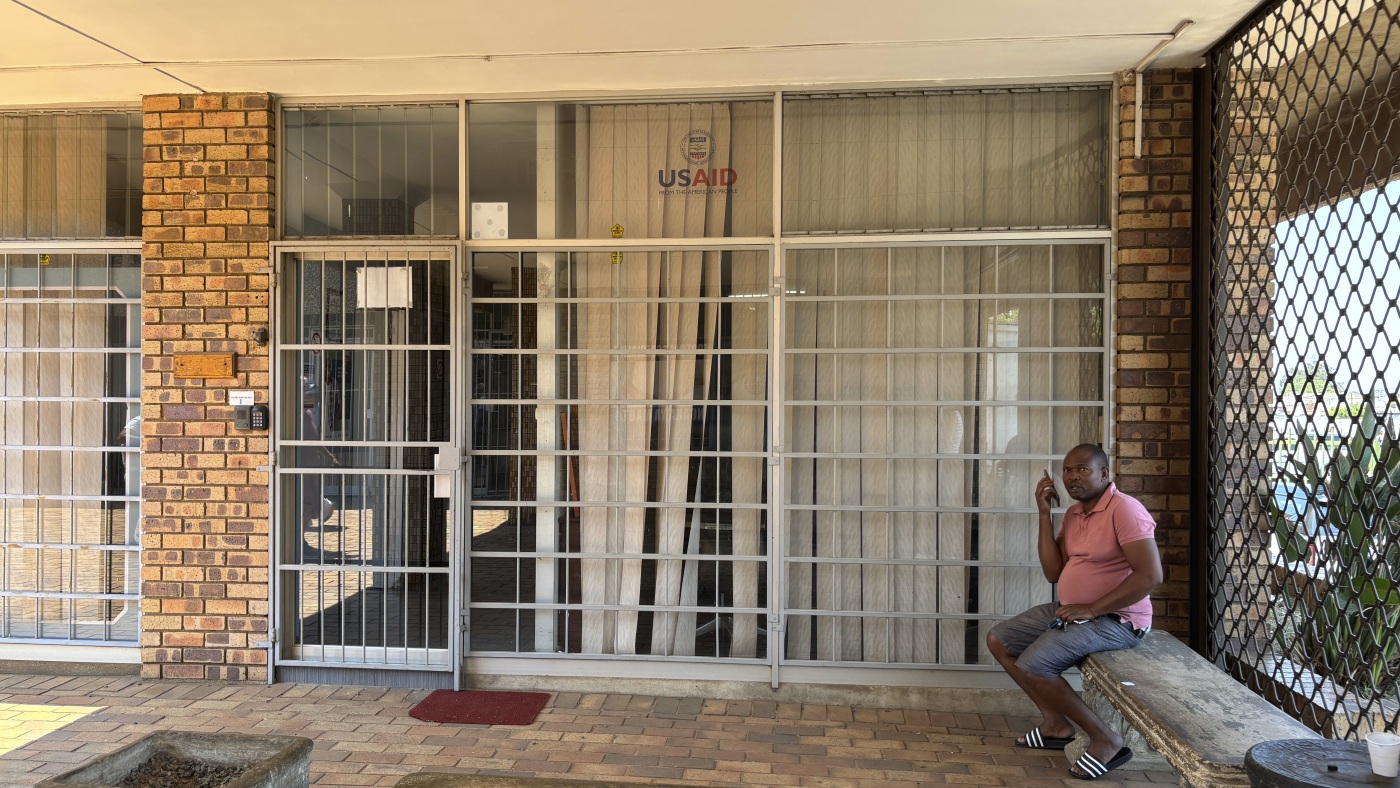
A man places flowers at a memorial for the 67 victims of a midair collision between an Army helicopter and an American Airlines flight from Kansas near the Ronald Reagan Washington National Airport. (Picture credit: AP)
The United States witnessed two deadly aviation disasters in a single week, resulting in at least 74 fatalities. The incidents, which occurred in Philadelphia and Washington, DC, have prompted federal investigations into the causes of both crashes.
A Learjet 55 air ambulance crashed in Philadelphia’s Castor Gardens neighbourhood on Saturday, killing seven people and injuring 22 others. Three of the injured remain in critical condition, Philadelphia Mayor Cherelle Parker confirmed on Sunday.
The aircraft, en route to Mexico, crashed shortly after takeoff from Northeast Philadelphia Airport, reaching an altitude of only 1,500 feet before going down. Among the six victims aboard the plane was a young girl who had recently completed medical treatment in the US and was travelling with her mother.
The crash also caused extensive damage to the residential area, destroying 11 homes and several businesses. Investigators from the National Transportation Safety Board (NTSB) have retrieved key evidence, including the cockpit voice recorder and the ground proximity warning system, to determine the cause of the crash.
Authorities are conducting interviews with witnesses and reviewing air traffic control communications as part of their ongoing investigation.
Mid-air collision in Washington
Meanwhile, in Washington, DC, authorities have recovered and identified 55 of the 67 victims from the Potomac River after a mid-air collision between an American Airlines jet and a US Army Black Hawk helicopter.
The collision, which occurred over the Potomac River on January 30, is being described as the deadliest US air disaster in more than two decades. The American Airlines jet was carrying 60 passengers and four crew members when it collided with the Black Hawk helicopter during its approach to Reagan National Airport.
Divers are still searching for the remaining bodies, with recovery operations expected to continue throughout the week. Investigators are analyzing conflicting altitude data—while the airliner’s flight recorder recorded an altitude of 325 feet, control tower data indicated the helicopter was flying at 200 feet, the maximum permitted altitude in the area.
The cockpit voice recorder captured the pilots' verbal reaction moments before impact, but it remains unclear whether any evasive action was attempted. The Federal Aviation Administration (FAA) has since imposed restrictions on helicopter traffic around Reagan National Airport and is reviewing air traffic control staffing after it was revealed that a single controller was managing both aircraft at the time of the collision.
The NTSB is leading both investigations and is expected to release preliminary findings within the next 30 days. Authorities continue to gather evidence, analyze flight data, and interview key personnel to determine the exact circumstances that led to the tragic crashes.

 3 hours ago
3
3 hours ago
3









